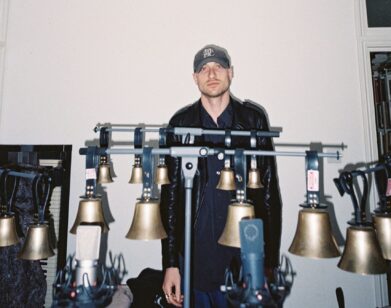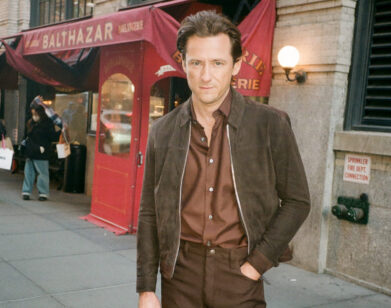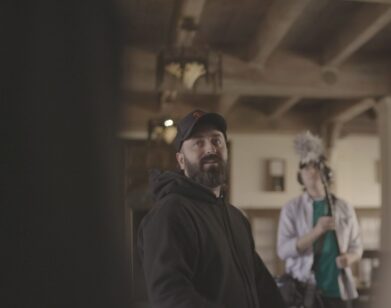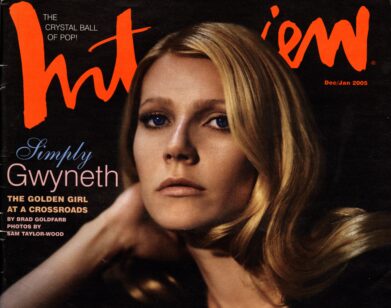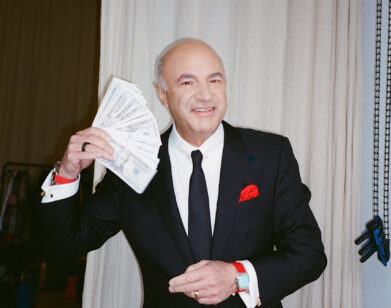Lauren Greenfield Makes a House Call
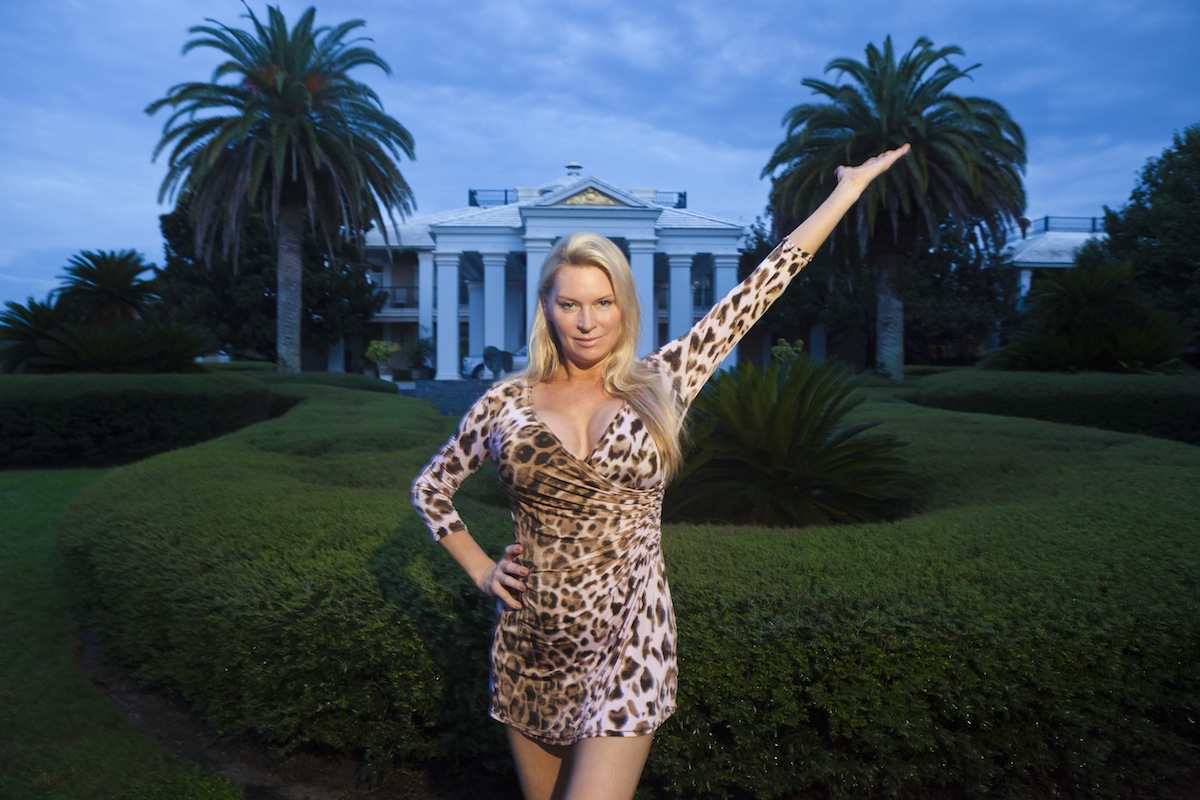
ABOVE: JACKIE SIEGEL IN THE QUEEN OF VERSAILLES. IMAGE COURTESY OF LAUREN GREENFIELD
When F. Scott Fitzgerald famously described Jay Gatsby as a son of God who “sprang from his Platonic conception of himself,” he could have been alluding to any insatiable American in search of a better lot in life. Take, for instance, Jackie Siegel, whose humble beginnings and brief stint at the bottom of the IBM totem pole were enough to kick-start a professional modeling career in lieu of pursuing her original calling, computer engineering. Like Gatsby before her, the blonde-haired beauty fled small-town Binghamton, New York, in hopes of achieving the American Dream.
And achieve it she did. At 43, Jackie had a (much older) husband (time-share mogul, David Siegel), eight children, insurmountable wealth, and an influential social circle. And so, “because [they] could,” the Siegels began construction on a 90,000-square-foot mega-mansion modeled after the Palace of Versailles. Then, financial crisis reared its ugly head at David’s formerly booming business and building was forced to an abrupt halt. But the Siegels aren’t ready to lose their financial stronghold, and for a woman who loves her $17,000 Gucci boots, pinching pennies isn’t easy. The result is a Cinderella story in reverse—and this time, there’s no fairy godmother on standby.
Beautifully crafted, Lauren Greenfield’s documentary about the Siegels, The Queen of Versailles, dives into a world of gaudiness and excess characterized by the 1%—as it turns out, the view isn’t so bad from the cheap seats.
JAMIE LINCOLN: Judgmental or not, if I were to play word association with a therapist and he said “billionaire,” I would immediately respond with “arrogant,” “pretentious,” or “privileged.” Yet in previous interviews, you’ve described your subject, Jackie Siegel, as “gregarious,” “charismatic,” and “down-to-Earth in a way.” First off, how did you meet Jackie, and do you still believe the Queen of Versailles is down-to-Earth?
LAUREN GREENFIELD: [laughs] Okay, well, one step at a time. I’m also a photographer, and I’ve been photographing a project about wealth and consumerism for a number of years. I was photographing Donatella Versace and met Jackie kind of randomly at a party for Donatella because of some of those qualities—being gregarious and friendly. I ended up making a picture of her purse and her two friends’ purses, even though my subject was really meant to be Donatella, because I struck up a conversation with them and Donatella wasn’t around. TIME Magazine ended up using this picture of the three purses in their Pictures of the Year to illustrate the high life; that was the caption. They thought the picture was representative of the Gilded Age.
The thing about Jackie is that she’s full of contradictions. When she told me she was building the biggest house in America, that’s what got me hooked and got me down to Florida to start making the movie. The thing about Jackie that was interesting was that even though she was living this kind of fantasy life of jets and castles and multiple residences and fur coats, she also did have this down-to-Earth quality, and an unpretentious quality. She had a kind of openness and accessibility that I thought would allow for an inside view of wealth, and I think part of it was her humble origins and her staying in touch with those people and where she came from. She was able to enjoy the stuff, but not let that take her away from things. To me, it really spoke to what our values are and our dreams are, that in a way, if somebody came into money tomorrow and could have anything they wanted, they might make a house like Versailles that had this kind of theme park, fantasy quality with the bowling alleys and the roller rinks and the football fields. It’s certainly not like the real palace of Versailles in that sense.
LINCOLN: From what I understand, though, The Queen of Versailles started out as a very different film, before the financial crisis impacted David’s company so negatively. How did the story evolve?
GREENFIELD: When I started, I thought it was going to be more about the ultimate expression of the American Dream—the building of the house, and Jackie as a character and all the children and this entourage of domestic help—a contemporary take on Upstairs, Downstairs. I was always interested in the world we live in, where reality TV and this obsession with wealth is so dominant, having a real cinéma vérité, fly-on-the-wall look at what wealth is really like. It started out being that—there wasn’t really any story, per se, except that I thought the building of this house would give it a general structure.
The turn happened very suddenly, it was the middle of 2010, even after the crash. They didn’t seem like they were people who would ever be affected; I assumed that billionaires had a lot of insulation. I was just there for a family birthday party, and while I was there the house went on the market, and it was like, “Whoa, what’s going on here?” When I interviewed David, he revealed that he had put everything they had into their business and never taken anything off the table and personally signed for all the business loans. So I realized what the stakes were, and he said the bank was forcing them to sell the house and they were trying to raise cash in other ways.
At that point, it really dawned on me that their story was a kind of super-sized version of what so many families have gone through in the crash, which I had already photographed. I had photographed foreclosure cities in California, and I had photographed the crisis in Dubai, so there was something really familiar and tragic about what they were going through, and then as it progressed, to see how it affected them and their family in both good and really hard ways. That became the story, and it was clear as it was happening.
LINCOLN: A few scenes from the film stand out in my mind. The first was when Jackie points out that she didn’t think she’d have more than one child growing up, but once she found out she could hire nannies, she didn’t see any reason to stop having children. Then you juxtapose this statement with the speech by Virginia, one of the Siegels’ nannies, on her father’s grave and how difficult it is to provide for her real family. This, for me, was heart-wrenching to watch. I’m interested to hear from your perspective, what was the relationship like between the Siegels and their staff?
GREENFIELD: The staff actually really like the Siegels, particularly Jackie. In a way, they were closer than you would expect. Jackie has a big heart, and she’s willing to do whatever you ask of her, and you see that with Tina [Jackie’s childhood friend whose home faced foreclosure]. I think the thing about Tina is before she asked for the money, she certainly needed help in the past, but she never asked Jackie. With regard the nannies, they always had a lot of affection for Jackie and David. Marissa even talked about her great admiration for David. I don’t know that Virginia ever shared with Jackie what was going on with her children, or wanting to go back to the Philippines. I think Virginia chose to take every penny that she made and send it to her children. For her, that was what being a good mother was—providing for her family. Even when she was saving up money to go, her mother passed away and her siblings didn’t have enough money for the funeral, so she sent it instead of going herself. I think for Virginia, that’s what it means to be a good mother, and I was really interested in this parallel between Jackie and Virginia, where neither of them were directly parenting, really because of their money. Virginia, because she had so little, and Jackie, because she had so much.
LINCOLN: Another scene that stands out in my mind is when Jackie is told she needs to cut back on her spending. Instead of taking this to heart, she heads to Wal-Mart and buys shopping card after shopping cart filled with toys the children clearly don’t need. In your opinion, why couldn’t Jackie stop living in excess? Why all the stuff?
GREENFIELD: I think she did think she was being conscientious and downsizing by going to Wal-Mart instead of shopping designer. For me, what that scene really speaks to is the addictive quality of consumerism, and how nothing is ever enough. I’ve never bought that much stuff at a Wal-Mart, but I’ve certainly been to Costco expecting to buy one thing and come out with a cart full of stuff that I didn’t know I wanted or needed. Jonquil speaks really eloquently to that; she’s the adoptive niece who comes from poverty and Jackie takes her in. At the end, she talks about how before she came to their house, she would watch TV and see rich people and think they woke up every day with a smile on their faces. But now that she has it all, she realizes that you just get used to it, and you want more and more. That’s really what that scene is about, our inability to get satisfaction from those things.
I had the opportunity a few weeks ago to show it to the Secretary of Housing and Urban Development and he said for him, it’s really about values and it’s about what is enough and what is too much and when are we satisfied. In a way, that really sums up the movie for me too, and I think that Wal-Mart scene speaks to it. A couple weeks ago, Jackie was at Silverdocs with me, in the middle of a driving vacation with the children, and I said, “Oh, are you taking a cheaper vacation? Is this part of downsizing?” And she said, “Well, yes and no, we’re traveling by car, but I stopped at Saks Fifth Avenue and I stopped at the Chanel boutique on the way.”
LINCOLN: So not much has changed then?
GREENFIELD: No, I mean, she loves to shop and doesn’t really pay too much attention to all the numbers.
LINCOLN: And again, probably my favorite scene from the film is at the Siegels’ Christmas party, when they ask one of the nannies to wear a reindeer costume to entertain the guests, and as she’s putting it on, she does a little jig and starts signing some carols. You put this image in parallel with the Siegels a floor below, and David is completely miserable talking to his guests about the failing economy. Was this done purposefully to show that money can’t buy happiness?
GREENFIELD: That scene for me is more like a literary coming together of all the different characters. I love that it was a Christmas party, and we’ve got Cliff the limo driver, Lorraine the real estate agent, people we recognize that are part of the Siegel entourage. The scene with Marissa—I hadn’t really thought about it that way, on one hand it’s about joy, but on the other hand, she’s clearly in a subservient role being asked to be the entertainment. I guess it’s more absurdist than anything else. In a way it kind of reminds me of the scene with the merry-go-round in the beginning, which is almost surreal.
LINCOLN: I’m interested to hear what the American Dream means to you.
GREENFIELD: I don’t know if it’s that important what it means to me; I was most interested in what it means to us as a culture. What I’ve been interested in is why home ownership is so essential to the American Dream. It’s not in every country that home ownership is part of success and making your own way, but in this country it’s central to it. I’m interested in an ongoing exploration of what that Dream is, and whether it needs to be rethought and recalibrated from the lessons we learned in the crisis.
THE QUEEN OF VERSAILLES IS OUT IN LIMITED RELEASE TOMORROW.

